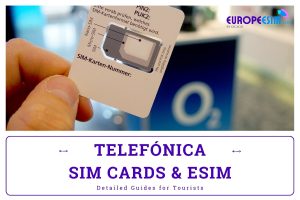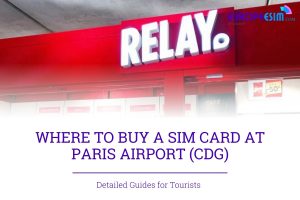Traveling abroad can be exciting but staying connected is crucial. Buying a local SIM card is often more affordable than roaming. Major European airports conveniently sell SIM cards upon arrival. This guide covers buying SIM card at European airports – availability, costs, documentation needed, and alternatives.
Table of Contents
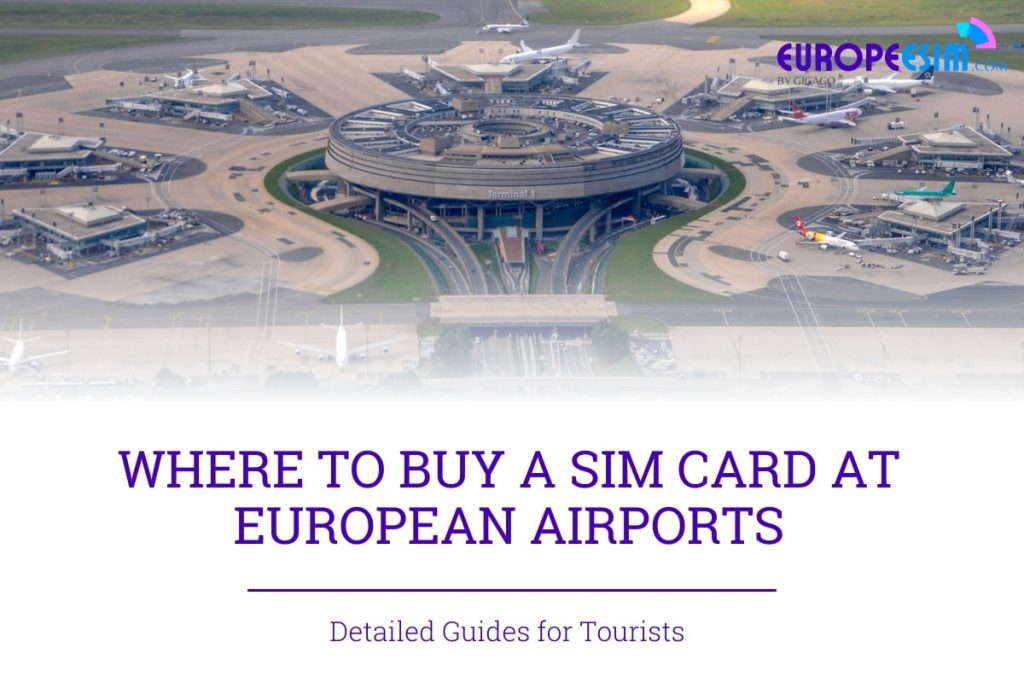
I. Which Airports In Europe Offer Sim Cards For Tourists?
Most major international airports across Europe have SIM card vending machines or stores catered to travelers. Some of the most popular airports where tourists can readily purchase SIM cards:
1. London Heathrow Airport (LHR)
As one of the busiest airports worldwide, London Heathrow Airport has multiple SIM card kiosks and stores across its four terminals. Leading UK providers like Vodafone, EE, O2, and Three all have outlets selling packages valid for 30 days. Both prepaid and eSIM options are available.
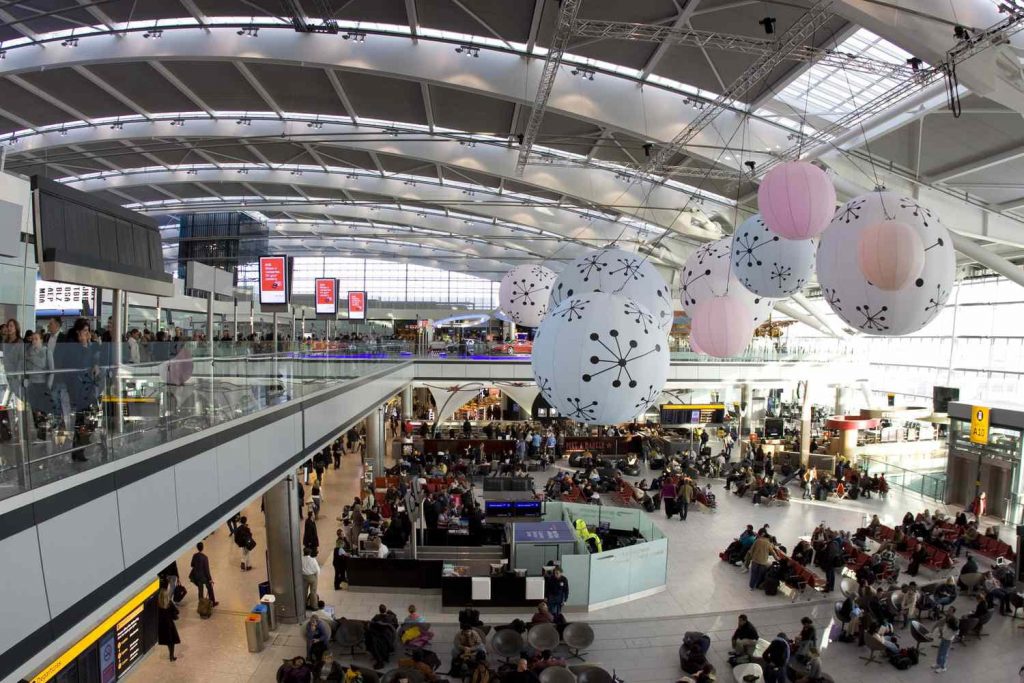
2. Paris Charles de Gaulle Airport (CDG)
Both terminals 2E and 2F at Paris CDG Airport have kiosks from major French telecom companies like Orange, SFR, and Bouygues Telecom. These kiosks sell prepaid SIM cards that can be activated immediately. Travelers can purchase a SIM card upon arriving in France to have a local phone number. Some of the kiosks have multilingual staff, including English speakers, to assist international visitors.

3. Frankfurt Airport (FRA)
Germany’s busiest airport – Frankfurt Airport – has Telekom and Vodafone outlets offering prepaid SIMs across terminals 1 and 2. Packages are available with EU roaming allowing use in multiple countries.

4. Amsterdam Schiphol Airport (AMS)
Amsterdam Airport Schiphol, located in Amsterdam, is the largest and busiest airport in the Netherlands. Travelers can purchase prepaid SIM cards from key Dutch carriers like KPN, Vodafone, and T-Mobile at kiosks post-security. This provides visitors mobile connectivity upon arrival via local data and call services during their stay.

5. Barcelona El Prat Airport (BCN)
Barcelona El Prat Airport – Spain’s second busiest airport features Yoigo and Movistar desks conveniently located in terminal 1 and 2 arrivals. Their SIM cards provide great value with ample data and minutes for Spain and EU roaming.

6. Rome Fiumicino Airport (FCO)
Rome’s biggest airport, Leonardo da Vinci–Fiumicino Airport, makes it easy for visitors to get prepaid SIM cards from Italy’s major cell phone companies. Booths for TIM, Vodafone, and WindTre are located in Terminals 1, 2 and 3. This allows travelers to buy SIMs as soon as they arrive.

6. Zurich Airport (ZRH)
Zurich Airport (ZRH) services over 30 million passengers per year traveling to and from Switzerland’s largest city. Visitors can purchase prepaid SIM cards from various providers after passport control in Arrival Halls 1 and 2 or vending machines. These SIMs provide mobile internet and calling throughout Switzerland and Europe, avoiding roaming fees.
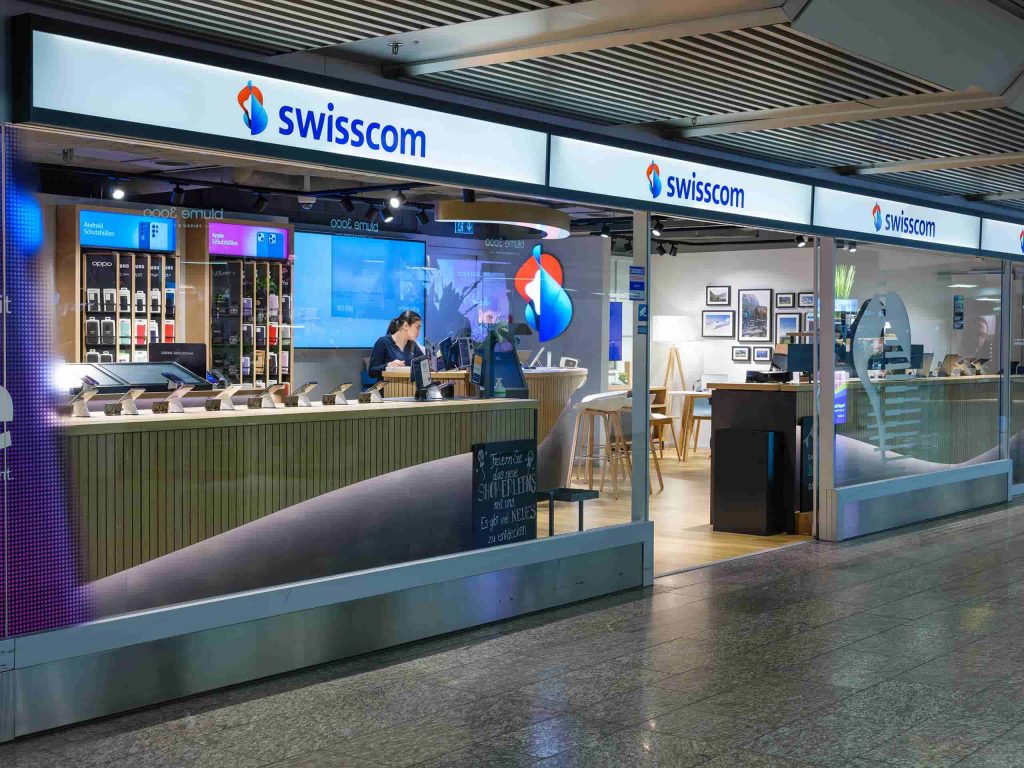
7. Istanbul Airport (IST)
Istanbul Airport (IST), located 40km west of Istanbul, handles international traffic to and from the city. Travelers can purchase prepaid SIM cards from shops after clearing immigration in the terminal Arrivals area. These SIMs provide visitors with affordable cellular connectivity within Turkey via high-speed internet and calls, bypassing roaming charges.

8. Lisbon Humberto Delgado Airport (LIS)
Lisbon Humberto Delgado Airport (LIS) handles over 27 million passengers annually, serving as the primary airport for Portugal’s capital. Travelers can purchase prepaid SIM cards from vending machines or local network carriers in the shopping areas of both Terminal 1 and Terminal 2.
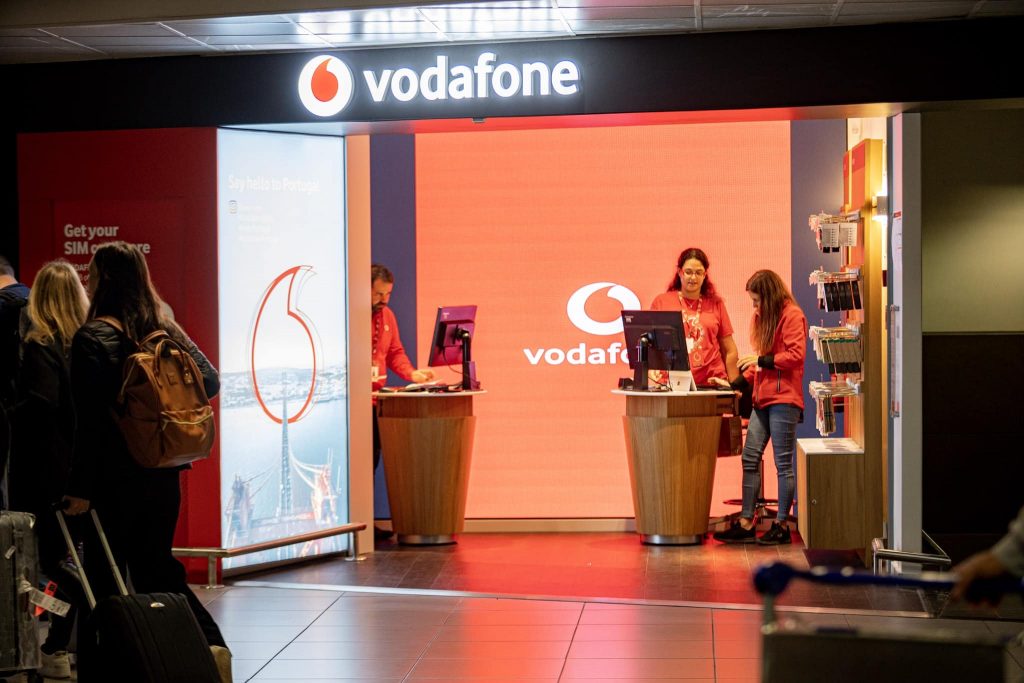
9. Copenhagen Airport (CPH)
Copenhagen Airport (CPH) serves as the primary airport for Denmark’s capital city, over 28 million passengers annually are accommodated on flights across Europe and farther afield. Travelers can purchase prepaid SIM cards from convenience stores or SIM vending machines located in Terminal 2 and 3, Arrival Hall.

II. Should You Buy SIM Card At European Airports?
Purchasing a local SIM card at European airports upon arrival in Europe can be extremely convenient, especially for short-term travelers. Major benefits include:
- Convenience – Airport shops make it easy to get a SIM without having to search elsewhere on arrival. No time wasted finding a shop.
- Selection – Airports typically have major carriers like Vodafone, Orange, etc. More options than a small shop.
- Prices – SIM prices at airports can be slightly higher than in city shops to capitalize on convenience. Check for discounts.
- Activation – SIMs purchased airside are usually ready to use right away, no waiting for delivery. Just insert and connect.
- Data plans – Airports offer data-focused tourist plans with good allowances for the region you’re visiting. Great for navigation.
- Support – If issues arise, airport shops provide support compared to ordering online abroad with no local help.
- Alternatives – Consider buying a SIM online before your trip or in a major city airport upon arrival for potentially better prices.
Note: While SIM card at European airports are convenient, they can be slightly more expensive than those purchased in city centers/online. If you have time, consider researching and buying a local SIM card before your trip for potentially better deals.
III. How Much Does a SIM Card At Airports In Europe Cost?
SIM card prices at airports in Europe can vary, but here are some general price ranges:
- Low end: €5-€15 (US$5-US$16) for basic data packages (around 1-2GB) with limited calls or SMS.
- Mid-range: €15-€40 (US$16-US$43) for moderate data packages (around 5-10GB) with some calls and SMS included.
- High end: €40-€70 (US$43-US$76) for larger data packages (around 15GB or more) with unlimited calls and SMS within Europe.
The major airports usually have retailers from all the major mobile operators like Vodafone, Orange, T-Mobile etc. Prices are often slightly higher at the airport stores versus purchasing in the city. Doing research online first can help you find the best value SIM for your needs. But these price ranges should give a general idea of costs at European airports.
IV. What To Prepare To Buy A SIM Card At Europe Airports?
Foreign tourists must be well prepared with the right documentation when purchasing a SIM card at European airports to ensure smooth sign-up.
- Passport – You’ll need to show your passport for verification and ID purposes when purchasing the SIM.
- Device – Make sure to have the phone or device you want to insert the SIM card into so the retailer can help you pick the right size and type of SIM.
- Currency – SIM cards are typically paid for in local currency, so have cash in Euros or the currency of the country you’re visiting. Not all retailers accept cards.
- Know the carrier options – Research mobile carriers in the country like Vodafone, Orange, T-Mobile, etc. so you have an idea of coverage and plans.
- International calling/data plan – Decide if you need calls/texts to your home country or just local connectivity. Plans vary in cost and inclusions.
- WiFi – Test any WiFi at the airport before purchasing a SIM in case it covers your immediate needs.
- Activation – Have your passport handy again as the SIM will need to be registered to activate the service. Ask about activation steps.
- Charger – Make sure your device is charged so you can activate and test the SIM before leaving the airport.
With the right preparation, buying a SIM card at European airports becomes quick and straightforward for short-term traveling needs.
V. Where To Buy SIM Cards For Tourists Outside Airports In Europe?
While airport kiosks are the most convenient option, they often come at a premium. Here are three alternative locations to score a SIM card at European airports:
1. Carrier Stores
Official brand stores of top networks like Vodafone, Orange, Telekom, and Three exist across most cities. More package options with better prices are available. Stores also offer SIM delivery overseas or pickup appointments.
- Price range: $10 – $50 depending on data, calls, and validity.
- Pros: Great selection of plans, expert assistance, quick activation.
- Cons: Can be crowded, may not offer the cheapest deals.

2. Convenience Stores
Major local convenience store chains, gas stations, and even vending machines dispense SIM cards of select carriers in tourist towns and city centers. Top-up vouchers are also sold to recharge talk time/data. While the setup experience may not be very personalized, it allows quick SIM card procurement alongside daily needs.
- Price range: $10 – $40 for basic plans, $25 – $55 for high-data plans.
- Pros: Conveniently located, often offer self-service kiosks for quick purchase.
- Cons: Limited selection of plans, less support available, activation may require online registration.
3. Online
Numerous top European mobile carriers, along with competitive eSIM providers like Europe-esim, now provide an online option for tourists to purchase SIM cards before their travels. By digitally submitting their ID documents and payment, the SIM card can be delivered to their temporary local address.
- Price range: $5-$70 depending on data, calls, and validity.
- Pros: Convenient access from anywhere, often cheaper than airports, compare different plans easily.
- Cons: Requires internet connection, setup can be trickier, potential delays if eSIM activation fails.
In general, convenience stores offer the easiest quick solution but carrier stores/online may work out cheaper for longer trips if you need data-heavy plans or coverage across multiple countries.
VI. eSIM Europe – An Alternative To SIM Cards at European Airports
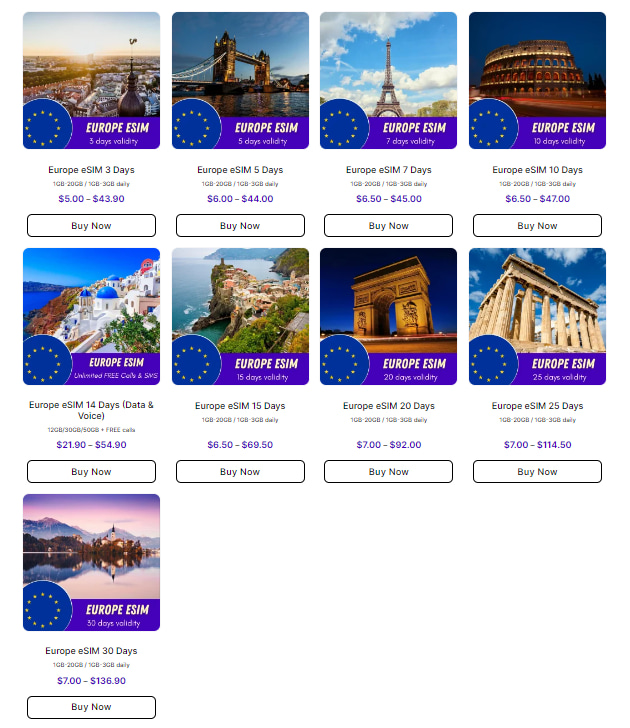
Apart from physical SIM cards, modern eSIM (embedded SIM) technology is fast emerging as an alternative for connectivity across Europe:
What is eSIM?
Think of it as a built-in SIM card preloaded on your phone. No tiny plastics to swap, no local stores to hunt down. Just a few taps and you’re good to go!
Why eSIM for Europe?
- Convenience: Purchase your eSIM online before you even leave home. Download it in minutes, and say goodbye to roaming charges and airport woes.
- Flexibility: Choose from a variety of data plans tailored for your trip, from quick weekend getaways to month-long journeys.
- Multiple devices: Share your eSIM with tablets or smartwatches, keeping the whole crew connected.
- Peace of mind: Enjoy reliable coverage across most of Europe, with top network providers at your fingertips.
Leading European carriers like Orange, Deutsche Telekom, and Vodafone support activating eSIM connectivity online and Several companies offer eSIMs for Europe, like Europe-eSIM.
Affordable Europe eSIM Plans from $5 → Stay Connected While Traveling
Choose from multi-day eSIM plans to start at just $5 for 1GB of data. Ranging from 3 to 30 days, you’ll find an affordable option to keep you chatting, mapping, and posting across Europe without busting your budget. Scan and go – no SIM swaps needed! Start exploring Europe stress-free with europe-esim.com‘s wide selection of budget-friendly plans.
Bonus tip: Check your phone's eSIM compatibility before you buy. Most recent smartphones support eSIM but double-check to be sure.
VII. FAQs
Can tourists buy Europe SIM cards at the airport upon arrival without prior booking?
Yes, most major European airports have SIM card kiosks in the arrivals area for tourists to conveniently walk-in and purchase local SIMs on the spot after immigration.
How long is a SIM card at European airport valid for tourists?
Prepaid tourist SIM cards bought from Europe airport outlets typically remain active for around 30 days from the date of activation. Some allow extending validity via top-ups.
What documents do tourists need when purchasing Europe Airport SIM card?
Carry your unlocked phone, passport copy, passport photo, visa copy (if applicable), overseas address proof, and internationally enabled debit/credit card.
Can Europe SIM cards purchased at airport be used across different countries?
If your selected carrier package includes EU roaming, then yes – usage across Europe is enabled. Some bundles only cover the SIM card’s home country. Clarify roaming zone before purchasing.
Are eSIMs available for tourists instead of physical SIM card at Europe airports?
Currently eSIM activation is not commonly available at Europe airports. Carrier stores in city centers or online registration directly with providers is required prior for eligible devices.
VIII. Conclusion
Acquiring connectivity is pivotal for enjoyable travels across Europe. While SIM cards can be purchased conveniently upon landing at major Europe airports, costs may be inflated versus other channels. Prep with proper documents, unlock your phone, review packages in advance, and don’t hesitate to compare options across airport kiosks. Alternatively, directly enquiring about city carrier branches or procuring eSIM profiles online allows more flexibility. Ultimately convenient communication is key to exploring Europe smoothly.






